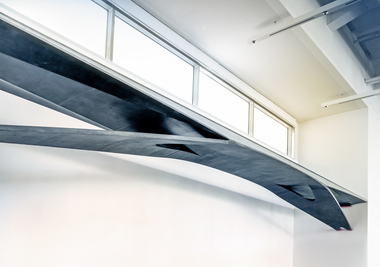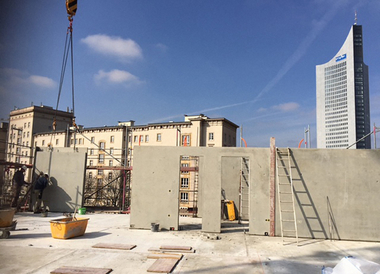Standardized use from precast to cast-in-place applications
Infra-lightweight concrete (ILC) originally represented an evolutionary stage of structural lightweight concrete (LC) in accordance with DIN EN 206 and DIN EN 1992. This new type of concrete had a significantly lower dry density to ensure low thermal conductivity, whereas its strength was still partially in the range specified in the aforementioned standards. Nowadays, increasingly stringent requirements for the thermal insulation effect of external walls require even lower bulk densities in order to retain acceptable wall thicknesses, which can no longer be ensured by structural lightweight concrete. Furthermore, extrapolating existing design rules in the relevant standards is associated with a major effort because many aspects also need to be verified by experimental testing.
Strictly speaking, neither the strength nor the dry density of previously designed ILCs comply with the definition of a structural concrete. Moreover, they fall into the category of lightweight aggregate concrete with open structure owing to their high porosity due to an air void content that clearly exceeds 10 vol%. This is why, ultimately, only a radical step will result in a practicable solution that reconciles user needs with the requirements arising from technical building rules.
DIN EN 1520 on prefabricated reinforced components of lightweight-aggregate concrete with open structure is used as the new reference and extended to cast-in-place application. This standard provides the necessary design rules. Cast-in-place application of this type of concrete is possible because lightweight aggregate concrete (LAC) with a porous matrix has proved to be a viable solution for the precast industry for over two decades. Furthermore, the same equipment and machinery can be used for its production as in the case of structural lightweight concrete. Yet there is still a need for clarification primarily with regard to the definition of on-site acceptance criteria for this type of concrete. These and other questions are currently being discussed with several manufacturers. This paper will present the method and initial results.





